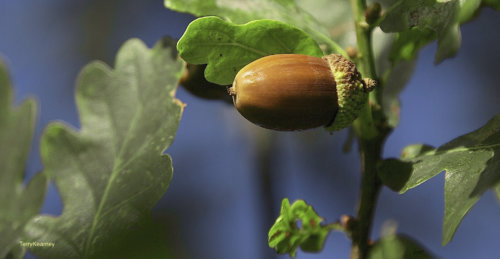The Singing Trees of Denmark Offer Music In Unexpected Places
Parks often host outdoor concerts led by bands and orchestras, but a park whose trees play music, minus the band? Pretty unique.
The “singing trees” in the Park of Music in Aalborg, Denmark, is just such a place. Over 80 trees feature music from a wide range of musicians who have performed in the city, from Bob Dylan, the 2016 Nobel Prize winner for literature, Elton John, Sting to Beyonce. Not to mention Stevie Wonder, B.B. King, Prince, ZZ Top to Rod Stewart, as well as angel-voiced Andrea Bocelli, the Vienna and London Philharmonic orchestras and Teatro alla Scala, Milan’s famous opera house.
Simply press the button on the plaque bearing the musician’s name next to the tree, and voila! – you’ll hear a medley of the artist’s hits, like “A Candle in the Wind” from Elton John. The idea of inviting musicians who played the Aalborg Congress and Cultural Center to plant a tree to green the adjacent park, Kildeparken, was a brainstorm of its then-director, Ernst Trillingsgaard. Sir Cliff Richard (“A Devil Woman”) was the first to plant a tree in 1987. In 2012, music buttons were added, and Richard planted a second tree.
The singing oak and cherry trees were just one surprise I discovered on a trip to Aalborg, a small city at the northern tip of Denmark about five hour’s drive north of Copenhagen, during a Baltic cruise. My ship docked in the harbor next to a building that looked hauntingly familiar, and reminded me of the Sydney Opera House in Australia. Imagine my surprise to hear that the same architect of one of the world’s most recognizable buildings, Aalborg native Jorn Utzon, also designed the structure before me, a cultural center with a restaurant on the University of Aalborg campus’ Utzon Center. Utzon’s father was a shipbuilder, and growing up in proximity to the trade inspired the sloping ship-like lines he designed into both buildings. (Another quirky sight: a splendid mansion in Dutch Renaissance style, built for the city’s wealthiest merchant, Jens Bang, in 1642. The five-story building on Osteragade, which was his house, shop and warehouse, was on the main square, a mere 600 feet from the harbor, for convenience.)
Then there was the Post Office, a handsome manor house-style building, that still used carrier pigeons until about 1960, our guide said. Bricked-up perches for Denmark’s only publicly-employed “pigeon post” could be seen on the octagonal roof tower of the circa 1908 building. In the quaint Old Town of colorful houses from the 17th and 18th centuries with potted plants in front, on Hjelmerstald, an elderly man stopped to tell our guide to watch out for the dog poop on the sidewalk. Apparently its occurrence in the immaculately tidy historic district was extraordinary enough to prompt a friendly warning.
Intrigued by reading about the Park of Music in a tourist brochure, I walked 15 minutes down Osteragade past sidewalk cafes, shops and bars to Kildeparken. I pressed one button after another on the warm mid-September day to listen to various excerpts. At Christmastime, the singing trees thoughtfully play different artists’ interpretations of holiday tunes, I was told.
Then, in the spirit of making mischief, I pressed a bunch of buttons within seconds of one another to hear a cacophony of sound– a torrent of pop, opera, blues and classical– before speed-walking back to the ship. Jens Bang would have approved.




































